Introduction
- Organizations should support an appropriate environment.
- Stronger Together – works with people having disabilities.
Report:
- Services and resources the firm provides.
- Discusses how it maintains the environment.
Thesis:
- Stronger Together supports the environment by advocating for the rights of individuals, educating organizations, and ensuring positive workplace environments.
Supporting a diverse, just, healing, and inclusive environment is crucial for all organizations. However, it is especially significant for companies working with individuals having disabilities. This presentation provides information about Stronger Together, the company supporting the needs of this group of the population. It addresses the services and resources the firm provides and discusses how it maintains an appropriate environment both for these individuals and within its structure. The presentation concludes that it is crucial to support an appropriate environment for people living with disabilities by educating organizations about the challenges they may encounter, ensuring a welcoming environment for all employees, and advocating for their legal and civil rights.

Services and Resources of the Organization
- Stronger Together – non-profit organization.
- Supports people having disabilities.
- More than two decades in the field.
Aims:
- Advocating for the rights of people with disabilities.
- Ensuring access to health care, education, housing, transportation.
- Supporting people living with intellectual disabilities.
The organization this paper presents is a non-profit company named Stronger Together that provides help for individuals living with disabilities. The company has been working in the field for more than two decades, offering support for this group of people. The firm aims at improving the lives of populations having disabilities, advocating for their rights, and ensuring their access to healthcare services, employment, housing, education, and transportation. Stronger Together provides care for individuals living with intellectual disabilities as well.
- Follows the example of the NDRN.
- Provides support within the criminal justice systems.
- Addresses the significance of enforcing appropriate laws.
- Believes that everyone should have equal opportunities.
In its work, Stronger Together also follows the example of the National Disability Rights Network (NDRN), which is a legally-based advocacy organization established by Congress that supports individuals with disabilities. Like in the NDRN, one of its services is advocating for this group of the population within the criminal justice systems (National Disability Rights Network 2019). To be specific, Stronger Together addresses the significance of enforcing laws protecting the human rights of individuals having disabilities. It believes that every person should have equal opportunities and be able to participate in community life fully.
- Collaborates with the EARN.
- Offers education and outreach activities.
- Helps to establish communication between employers and employees having disabilities.
- Supports companies in building inclusive workforces and creating welcoming working environments.
Today, Stronger Together has significant resources to achieve its aims and support vulnerable groups of individuals. First, the organization collaborates with the Employer Assistance and Resource Network on Disability Inclusion (EARN) to offer education and outreach activities to people living with disabilities (Employer Assistance and Resource Network on Disability Inclusion 2019). Together with the EARN, it helps to establish communication between employers and their potential employees that have physical or intellectual disabilities. Moreover, it offers support to companies wanting to build inclusive workforces and create positive environments for all workers.
- Has volunteers and professionally trained employees.
- Helps individuals with disabilities to perform daily tasks.
- Assists in cleaning, washing dishes, and doing shopping.
- Helps to find housing and maintain appropriate living conditions.
- Offers affordable housing options and ensures a healing environment.
Second, the company has volunteers and professionally trained employees, including nursing staff, that help people with disabilities to perform daily tasks or support their well-being. The organization aims at eliminating the challenges individuals having disabilities may encounter regularly, such as the ones associated with cleaning the house, washing dishes, and going shopping. Moreover, as mentioned before, employees and volunteers at Stronger Together help people to find housing and ensure that their living conditions are appropriate. Offering affordable options and maintaining a healing environment is one of the primary goals of the organization.
- Collaborates with local organizations (3 local initiatives).
- Offers food and toiletries to individuals living with disabilities.
- Collaborates with a major local hospital.
- Ensures that patients receive appropriate care.
- Holds educational events for medical professionals.
Finally, Stronger Together collaborates with local organizations to meet the needs people with disabilities have. For example, it works with three local initiatives offering food to individuals having physical or mental disparities. Moreover, the company’s resources allow it to provide individuals in need with other necessary products, such as toiletries. Besides that, Stronger Together works with a major local hospital to ensure that all patients living with disabilities receive appropriate care, holding educational events for medical professionals. This way, it communicates the needs individuals having disabilities have.
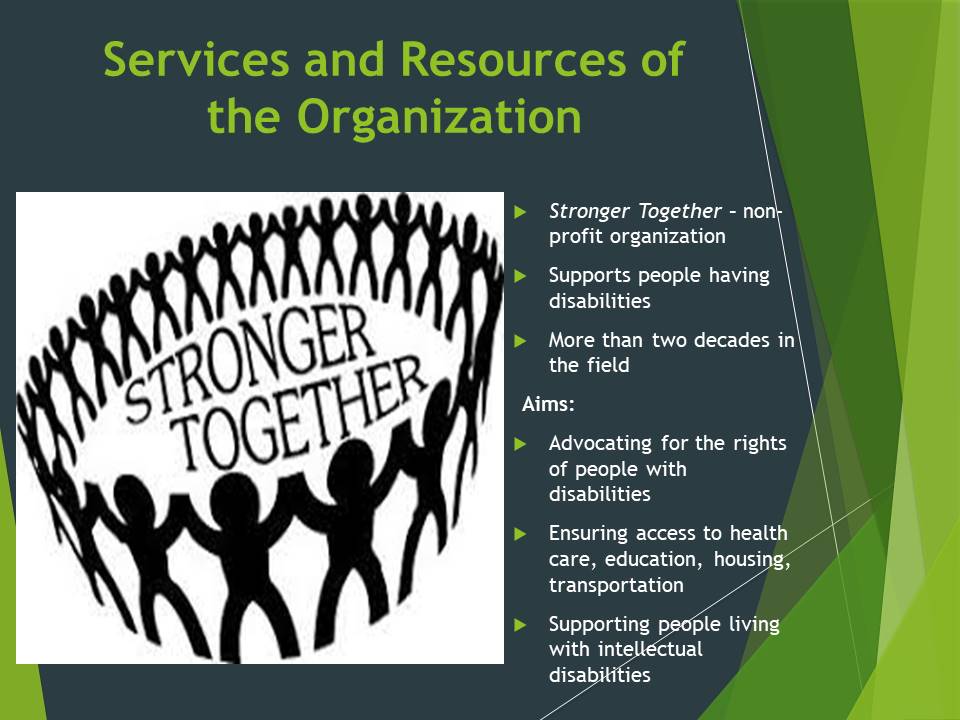

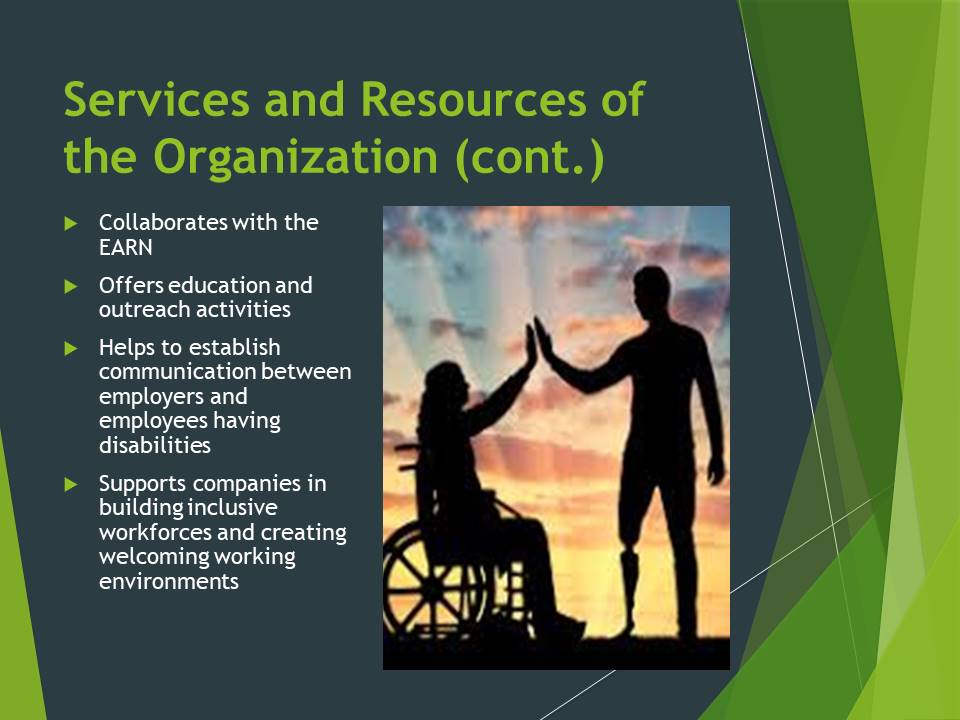
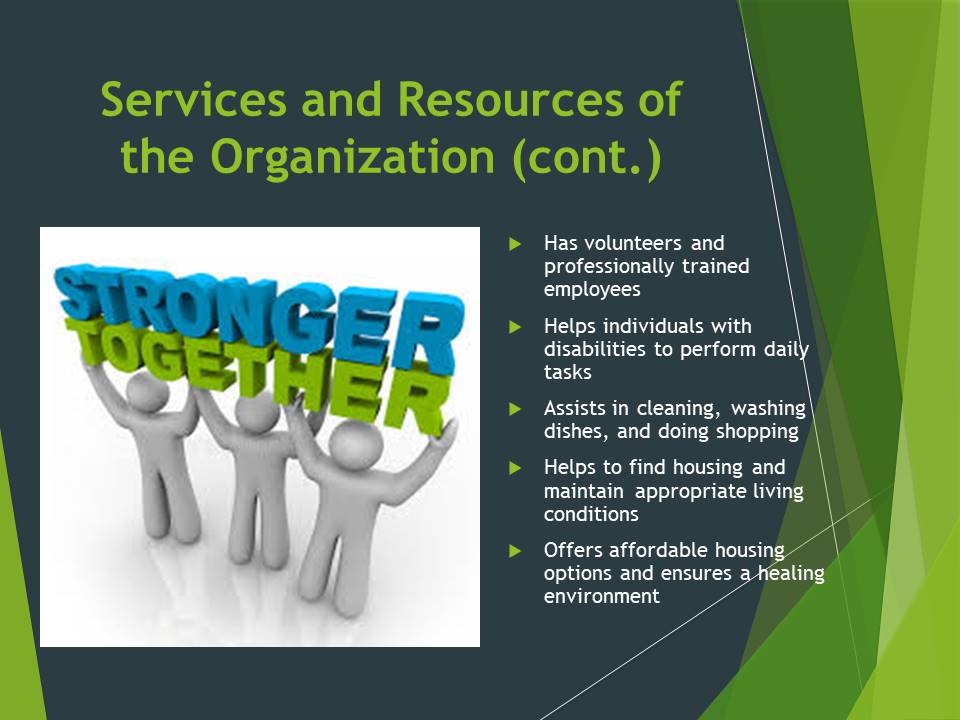
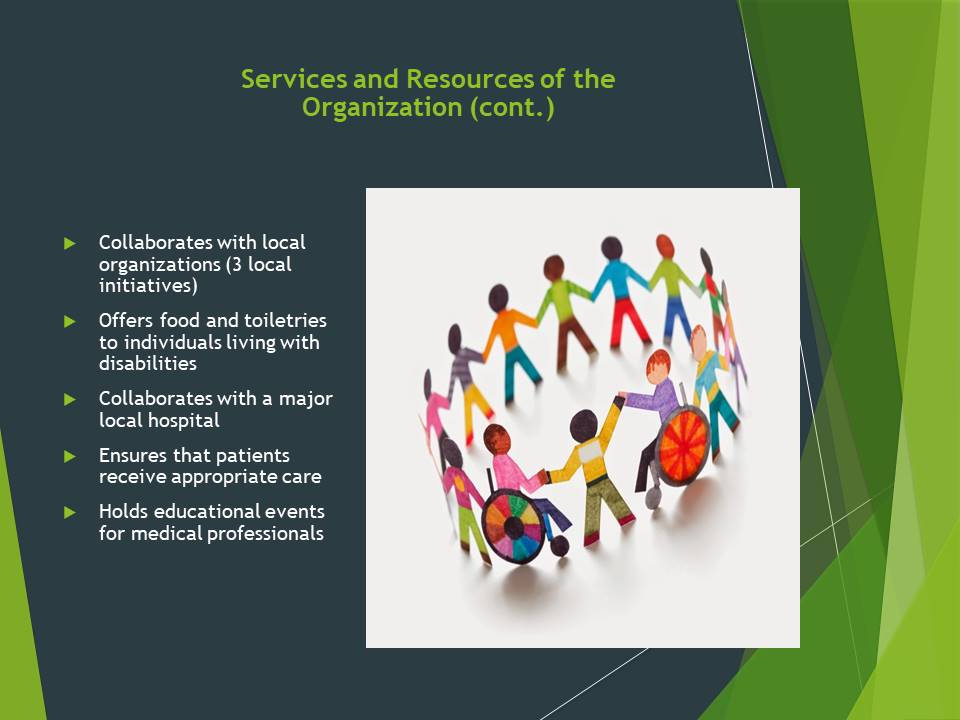
Principles of Transcultural Nursing
- The concepts of transcultural nursing are central to Stronger Together’s work.
- Understands that culture is a critical, but not the only, part of an individual’s identity.
- Seeks to view each person as an individual who is shaped by factors such as race, but not entirely defined by them.
Stronger Together follows the latest research in transcultural nursing. The organization’s volunteers and staff undergo training aimed at explaining the concepts related to understanding the patient’s culture and taking it into consideration when deciding on an appropriate health care measure. This approach, advocated by Lydia DeSantis (1994), views patients as individuals who are shaped by their race, culture, and ethnicity, but not defined by these factors. Ultimately, this means that Stronger Together advocates for a individualized approach unique to each of its clients.
- Understands that different cultures can perceive the same reality in a different ways.
- Staff and volunteers are trained in cultural brokerage.
- Seeks compromise informed by the patient’s cultural views of their disability and status.
The principles of transcultural nursing are especially valuable in low-income neighborhoods with low education rates and a high percentage of immigrants. For these populations, a lack of familiarity with the national healthcare system can be a significant obstacle to acquiring a standard of care and advocacy that is available to them. To assist them, Stronger Together maintains an outreach program designed to inform and educate people on the options available to them.
- Produces, translates, and distributes learning materials in non-English language.
- Contracts multilingual lawyers to legally represent non-English speaking people with disabilities in court or provide legal counseling.
- Currently developing English as a Second Language (ESL) courses and group programs for non-English speakers.
Different cultures can have different perceptions of the same condition, which includes disabilities. Stronger Together’s staff and volunteers working in the outreach program introduced in the previous slide are trained in cultural brokerage. This training enables them to treat the patient’s disability within the context of his or her culture and reach a compromise on treatment options that are acceptable in said context.
- Provides the information and education required to take advantage of the national healthcare system.
- Maintains an outreach program in low-income neighborhoods.
- Works with immigrants.
Stronger Together acknowledges that in such populations, language barrier can further hamper individuals from acquiring care. To remove this obstacle, the firm produces and distributes learning materials on disability and the national healthcare system in non-English languages, notably Spanish and Arabic. Furthermore, the organization staffs multilingual lawyers who are capable of legally representing non-English-speaking applicants. Group programs designed for non-English speaking participants and English as a Second Language (ESL) courses are currently in the development stage, and expected to be made available to the public in 2020.
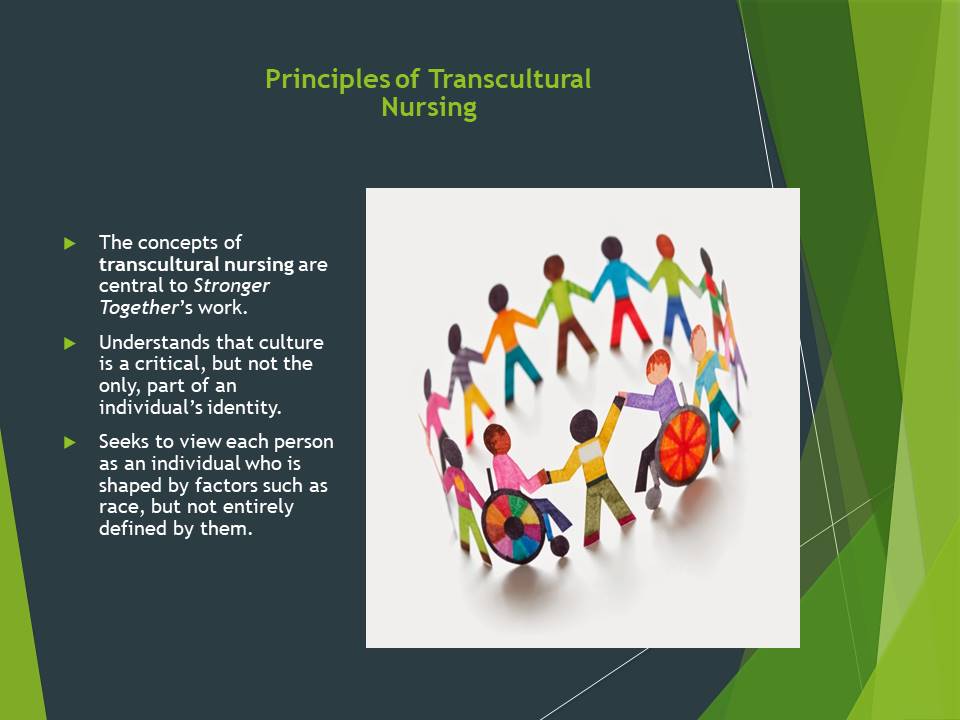
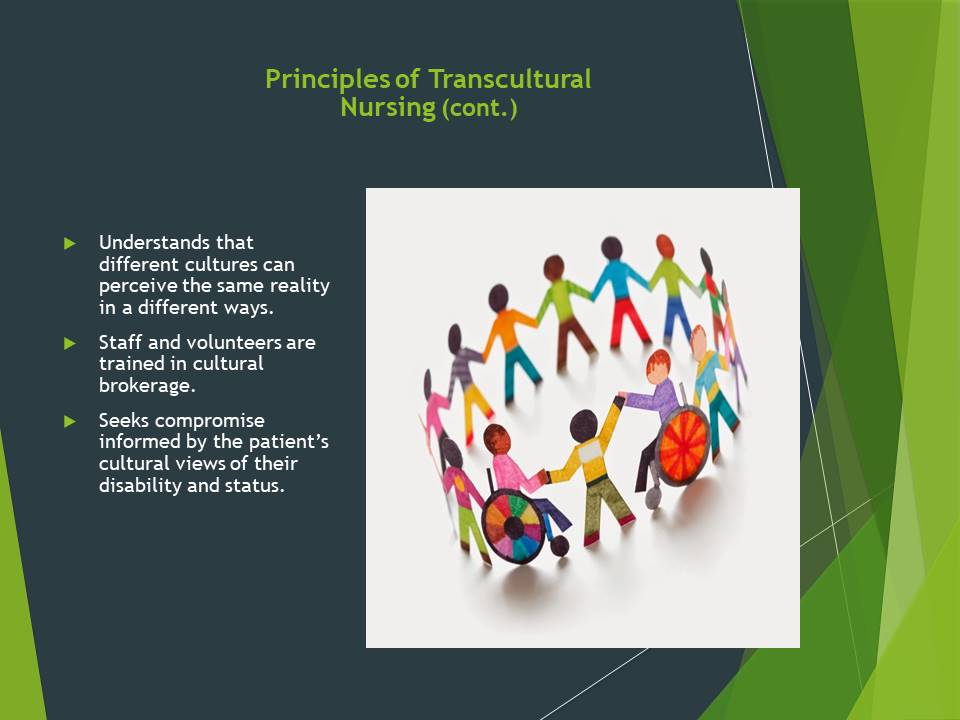

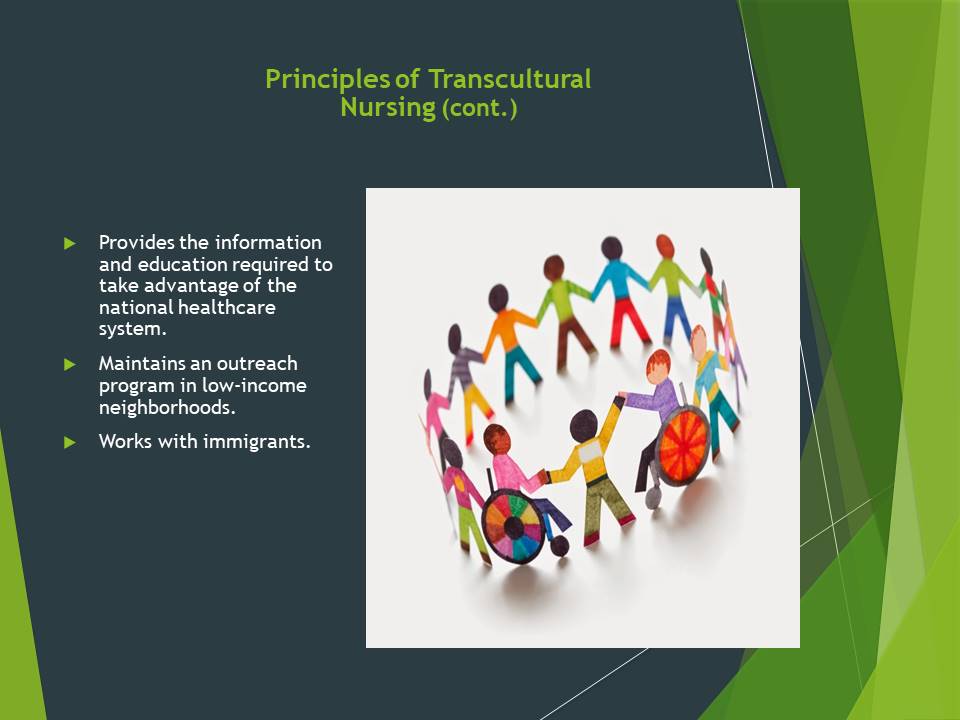
Working with Children and Adolescents
- Provides information and training to family members of people living with disabilities.
- Seeks to address racial, ethnic, and socioeconomic disparities in access to this information.
- Specifically, works with the parents of children living with disabilities, whose lives can be critically affected by such a lack of information.
Stronger Together provides the necessary training and information to the families of people with disabilities. As Singer and Baer (2012) note, a lack of information can be a significant barrier to managing disabilities such as asthma. Furthermore, a racial and socioeconomic disparity exists in this issue, affecting low-income Latin families more than others (Singer & Baer 2012). The organization ensures that parents of disabled children are informed of any special needs, procedures and considerations that may be required.
- Prepares teachers and education administrator for working with children living with disabilities.
- Produces and distributes learning materials adapted for learners suffering from disabilities.
- Staffs child and adolescent psychologists to help disadvantaged children and teenagers living with a disability.
- Provides financial aid in seeking psychological services.
Stronger Together also works with the education system, providing teachers and administrators with additional training on working with children with disabilities. The organization has assisted in authoring and adapting learning materials to be more accessible, and distributing these materials as necessary.
The firm’s staff includes child and adolescent psychologists and therapists to help children and teenagers with disabilities, particularly those with a disadvantaged socioeconomic status, cope with their condition. The same staff can also help with any other psychological issues related to disability. Finally, the organization provides low-income families financial aid in seeking psychological services for their children.
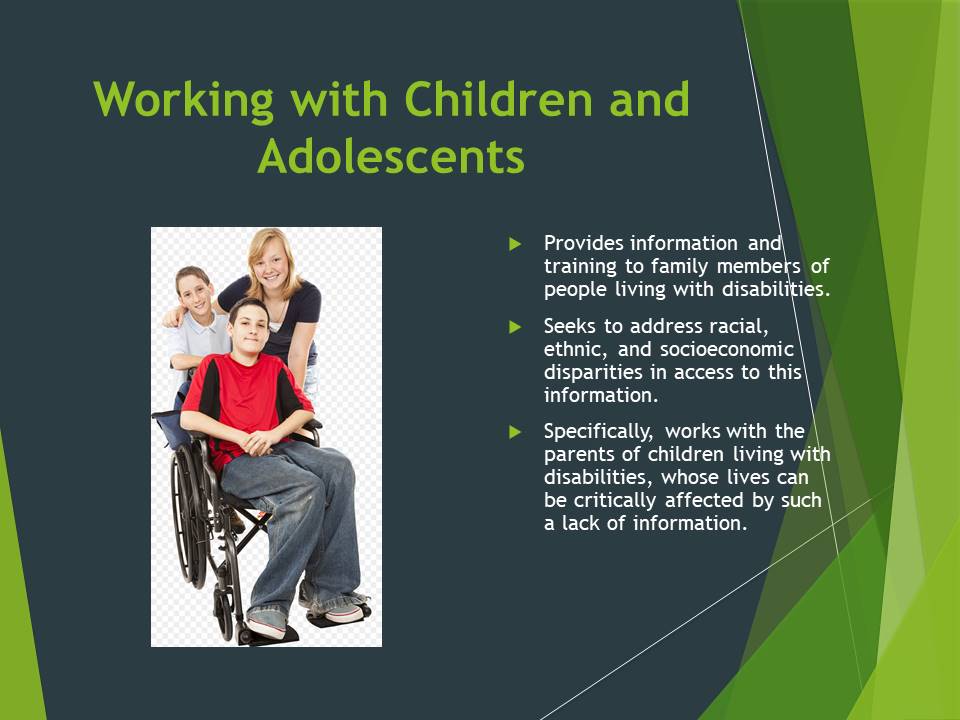
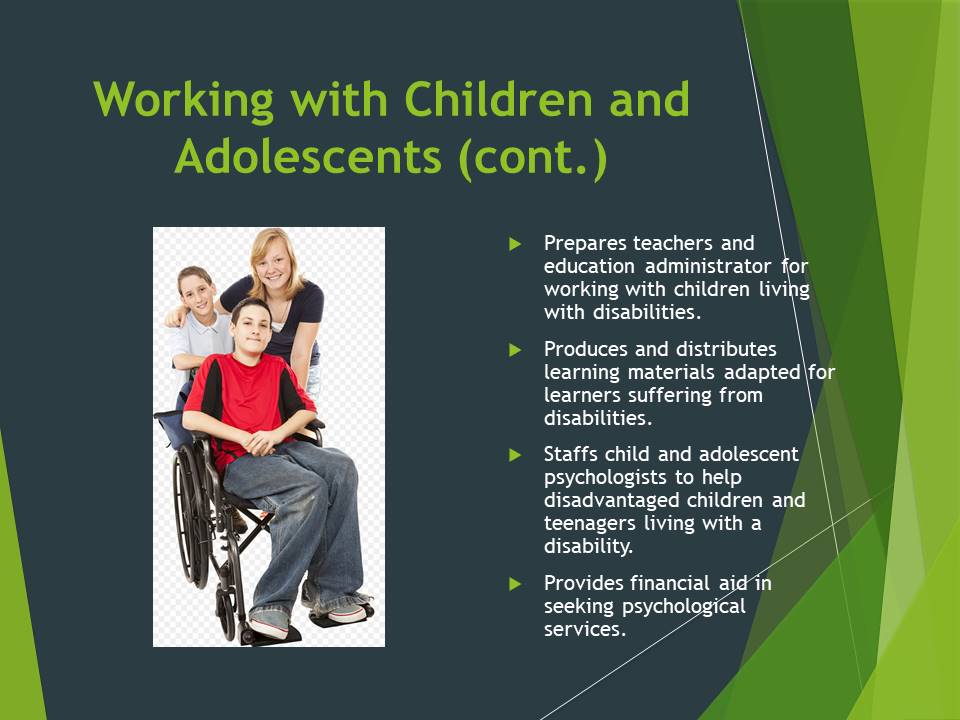
Helping the Elderly
- Provides older people with disabilities with general geriatric care in addition to helping manage their disability.
- Issues health monitoring devices such as blood pressure cuff meters and heartbeat monitors.
- Provides the elderly with training in the use of such devices, accounting for the patient’s existing disability.
For older patients, Stronger Together aims to provide a standard of general geriatric care that is necessary in addition to any special care required for managing their disability. The non-profit issues health monitoring devices such as heartbeat monitors, sphygmomanometers (blood pressure meters), and personal medical alert systems (emergency buttons) to the elderly people living with disabilities. The organization also offers training in their use, tailored to the individual’s existing disability.
- Performs weekly check-ins with older patients, ascertaining their status and collecting medical data if possible.
- Employs volunteers to socialize with aging individuals with disabilities living alone.
- Rehabilitation center offers special group programs for older people, aimed at establishing and maintaining their social support networks.
Stronger Together performs weekly phone or personal check-ins for geriatric patients to verify their status and, if possible, perform any additional medical tests that the patient cannot do him- or herself. For older persons living alone, these check-ins provide a necessary opportunity for socialization that may be otherwise unavailable to them. Additionally, the organization’s volunteers are ready to spend time with the people in question, specifically addressing their social needs, Finally, the organization’s rehabilitation center offers group programs specifically tailored for aging individuals. These programs focus on creating opportunities to establish and expand an individual’s social support network.
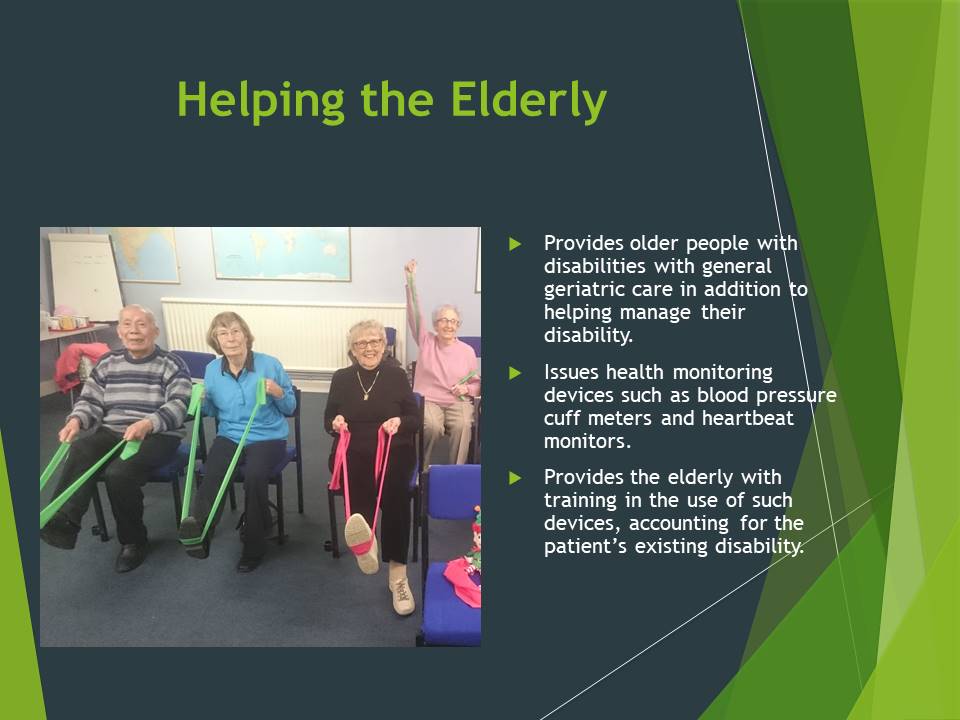
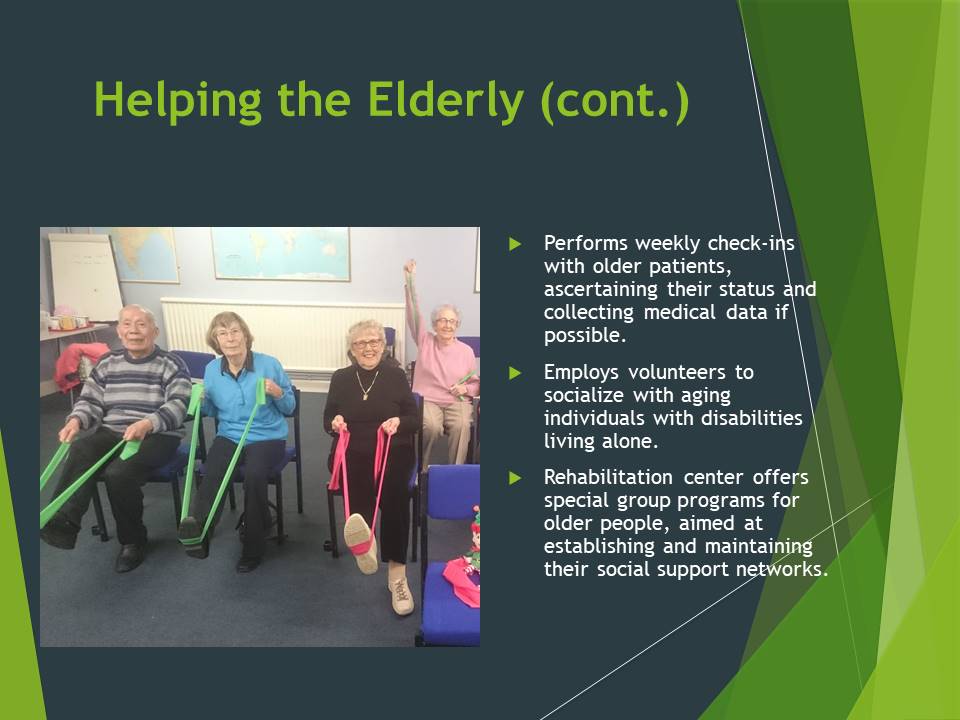
Challenging Disability Discrimination
- Challenges disability discrimination.
- Receives and responds to complaints of discrimination.
- Brings anti-discrimination training to healthcare providers.
Finally, Stronger Together aims to challenge discrimination based on disability. This type of discrimination can be especially damaging, especially in a healthcare setting, as it can discourage people living with disabilities from seeking medical aid (Moscoso-Porras, 2018). Stronger Together receives and responds to complaints of discriminatory behavior and offers sensitivity and transcultural nursing training to healthcare providers working in local facilities. This training is aimed at providing them with the cultural and social tools necessary for creating an inclusive, safe, and healing environment.
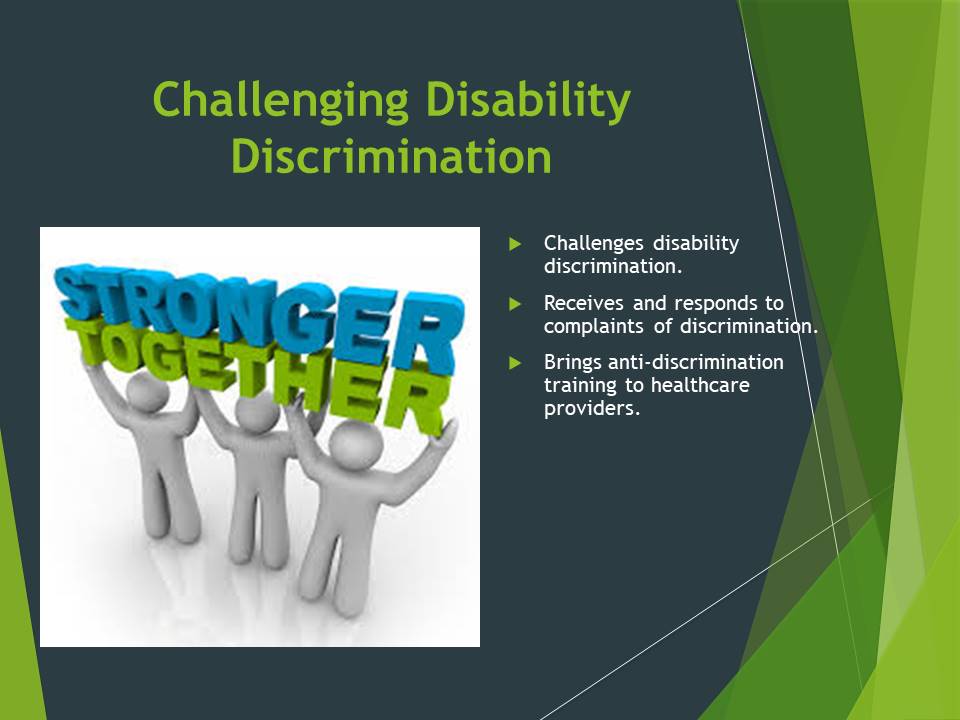
Helping with Legal Issues
- Assists individuals living with disabilities with legal issues.
- Contracts attorneys to help resolve legal issues in employment and education.
- If necessary, provides counseling and psychological assistance during the court proceedings.
The company’s legal services are available to private individuals, not just business owners. It staffs and maintains contact with attorneys and legal councilors to provide advice and representation in any disability-related issues. These issues include, but not limited to: resolution of employment and education conflicts; harassment and discrimination litigation; and class action lawsuits related to disabilities. Professional counseling and psychological services are also offered to help with the taxing nature of such processes if they are requested.
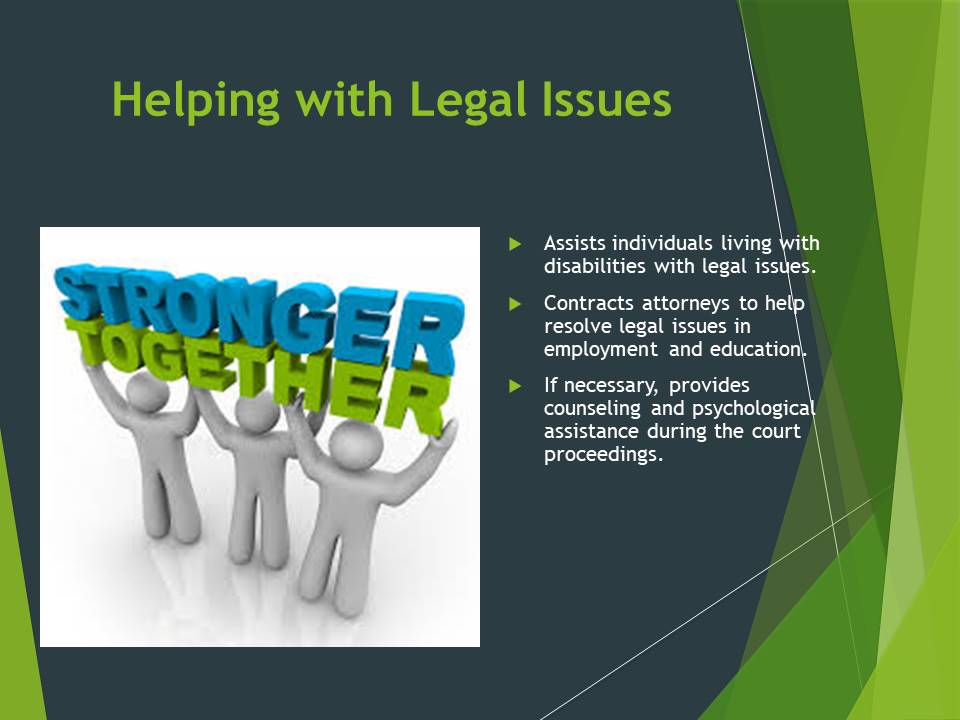
Creating an Appropriate Environment
- Environment – highly significant; can affect individuals’ mental/physical state.
- A person’s environment => their health (Singer and Baer 2012).
- Companies should support an inclusive environment (Moore, McDonald, and Bartlett 2017).
- Organizations tend to follow the beliefs of the wider environment.
- Stronger Together aims at creating a healing environment.
The environment can be considered one of the most significant factors affecting a person’s mental and physical state. Singer and Baer (2012) report that there is a direct connection between an individual’s environment and their health. The study by Moore, McDonald, and Bartlett (2017) shows that it is vital to create and support an inclusive environment for people living with disabilities. Unfortunately, in their internal policies, organizations often follow the beliefs and conventions of the wider environment, which may result in challenges for individuals having physical or mental disparities. Due to the factors presented above, Stronger Together strives to ensure that individuals it works with live in an environment that helps them heal; the strategies it uses will be discussed below.
- Maintains diverse and inclusive environment in its structures.
- Offers jobs to people living with disabilities.
- Ensures that all employees work together and have equal opportunities.
- Many positions are remote, but people can work from the office.
It is vital to note that the company strives to maintain a diverse and inclusive environment in its structures, too. Stronger Together offers jobs to individuals with disabilities wanting to be a part of the organization. The company ensures that all employees, regardless of their abilities, work together and have equal opportunities. Many of the positions Stronger Together offers to individuals with disabilities are remote, but all people can work from the office if they want.
- Strategy: ensure that individuals engage in physical and group activities.
- Participation is vital for human functioning (Krops et al. 2019).
- Physical activities support the well-being.
- Stronger Together has a rehabilitation center; offers group programs.
- Physical exercises, art sessions, communication.
One of the other strategies Stronger Together uses to support a supportive and healing environment is by ensuring that people with physical and mental disabilities can engage in some physical and group activities. Krops et al. (2019) report that participation is one of the most significant aspects of human functioning and physical activities are crucial for supporting well-being. Stronger Together has a rehabilitation center that offers group programs for people having disabilities. During these programs, individuals can do simple physical exercises, have art sessions together, and communicate with each other.
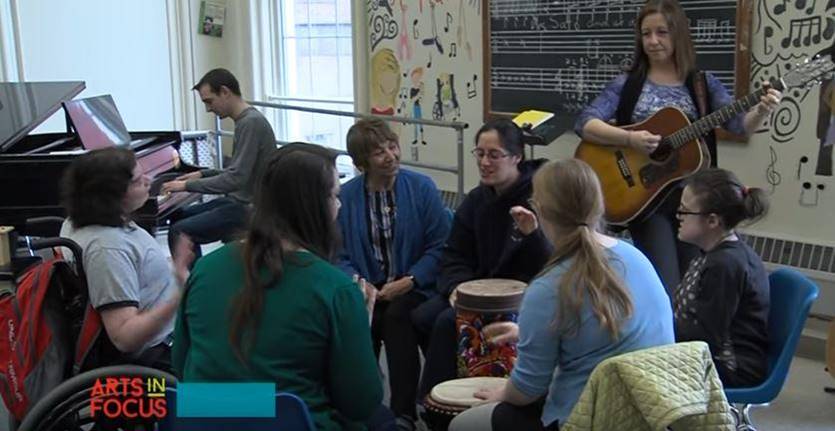
Typically, a group session in the rehabilitation center looks like in the picture above.
- Strives to maintain a just environment for individuals living with disabilities.
- Protects their civil and human rights.
- Encourages individuals to address challenging issues.
- Offers legal advice and financial aid.
- Provides emotional support to those in need.
As mentioned above, the company strives to maintain a just environment for individuals living with disabilities by protecting their human and civil rights. Stronger Together encourages people it works with to discuss the issues they encounter and offers legal advice. Moreover, if necessary, the representatives of the organization provide financial aid to individuals needing to work with lawyers. Finally, the company offers emotional support to those facing unfair policies or conditions related to the workplace or healthcare settings.
- Ensures that local companies support diversity and inclusive practices.
- Provides free diversity training sessions.
- Discusses disability employment, inclusive human resource practices.
- Raises awareness of possible challenging issues.
- Helps to implement healthy policies that meet people’s needs (Moore, McDonald, and Bartlett 2017).
It is crucial to add that Stronger Together ensures that local companies support diversity and inclusive practices within their settings. It offers free diversity training sessions for organizations, discussing issues of disability employment and inclusive human resource practices, raising awareness of the challenging issues individuals may encounter. Moore, McDonald, and Bartlett (2017) note that such an approach is crucial to encourage companies to implement healthy policies that meet the needs of people living with disabilities and align with organizational values.
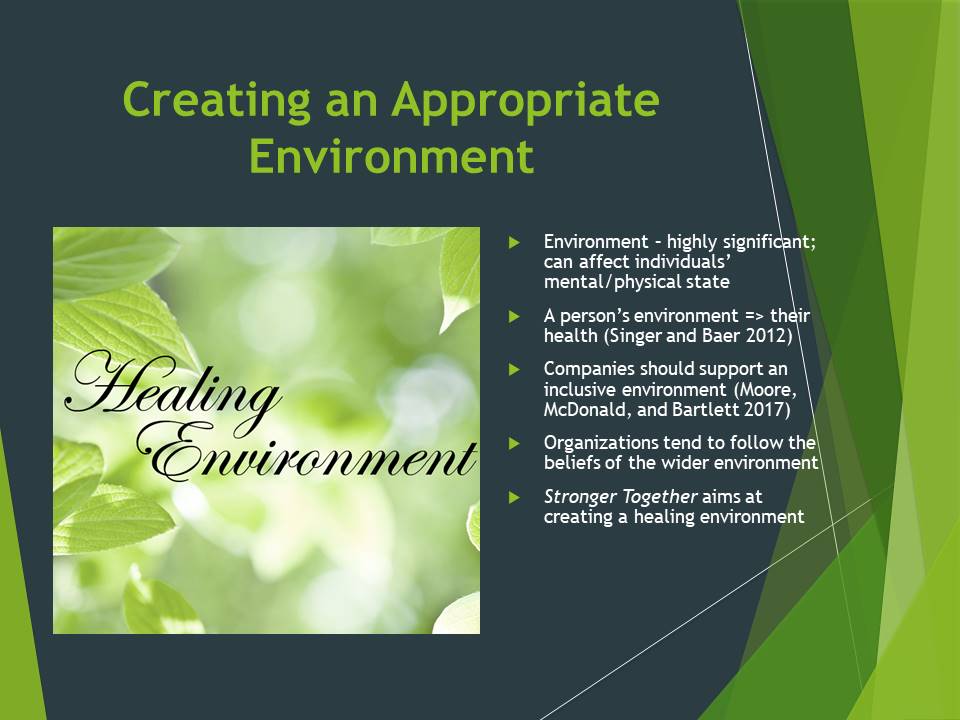

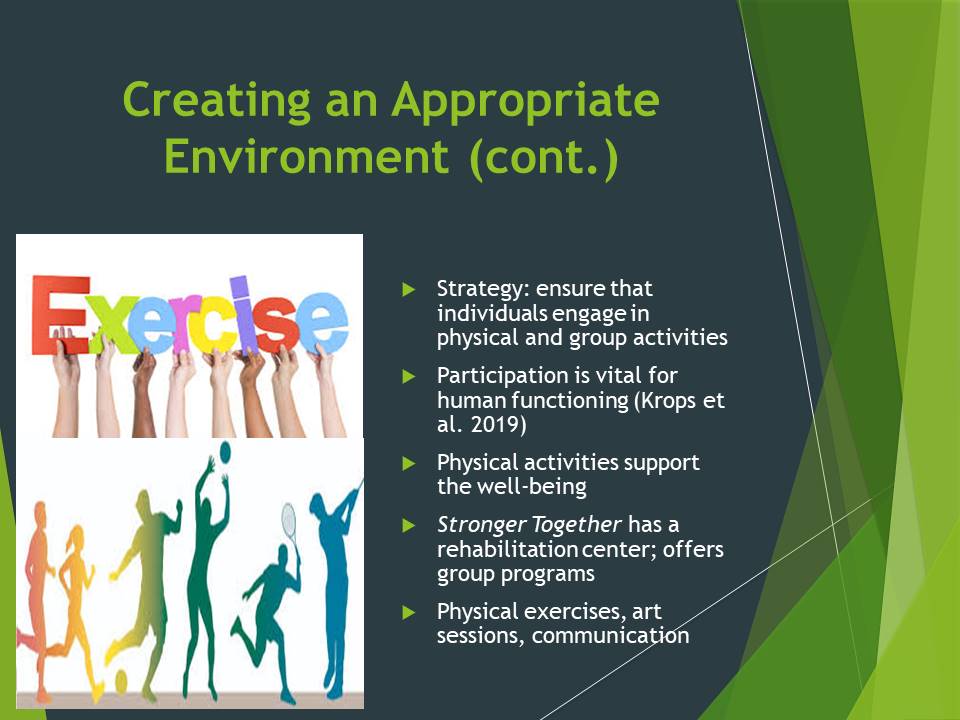

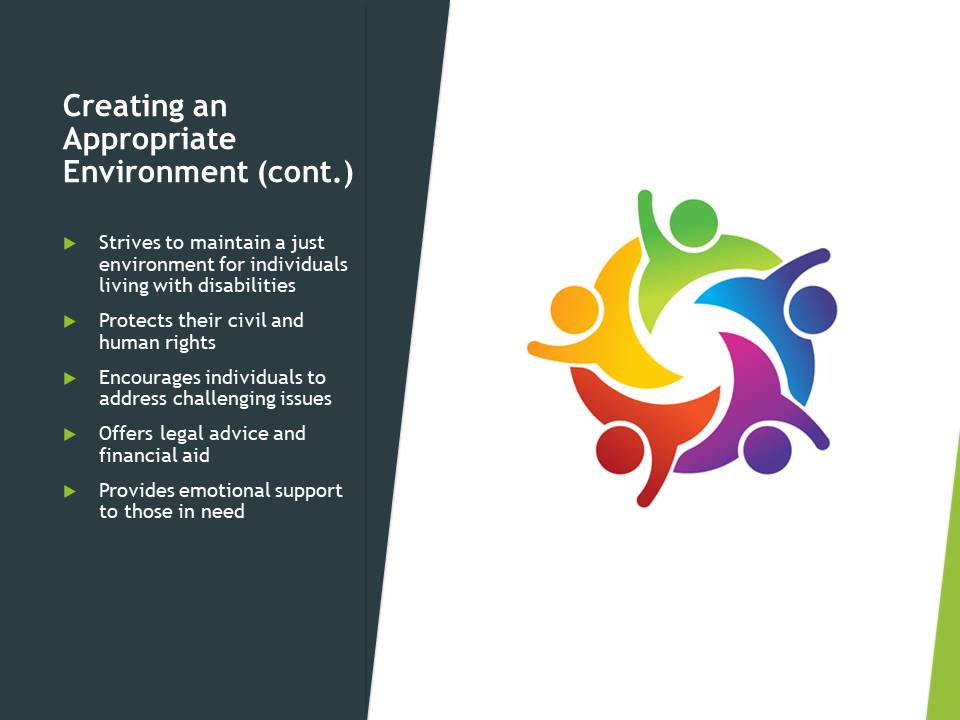

Improving the Physical Environment
- Helps install and maintain accessibility features in public spaces.
- Monitors and ensures compliance with the ADA.
- Employs specialists to help plan and deploy accessibility features.
- Provides legal aid to business owners seeking financial grants and tax deductions as per the ADA.
Stronger Together advances its legal advocacy to ensure that accessibility features are installed and maintained in public spaces in accordance with any requirements, standards, laws and regulations outlined in the Americans with Disabilities Act (ADA). Such features include wheelchair ramps, elevators, widened doors, and accessible toilets (United States Department of Justice, 2010). The lack of such features can make life and seeking healthcare a challenge to those with physical disabilities (Moscoso-Porras & Alvarado, 2018). The organization employs specialists to assist in the planning and deployment of these elements in public spaces. Stronger Together also provides legal aid to business owners in securing financial grants and tax deductions in accordance with the ADA.
- Helps brings mobility assistance and accessibility into the home.
- Contracts local construction firms to install accessibility features in private homes.
- Provides financial aid towards installing these modifications in homes.
Furthermore, Stronger Together works with local services and construction firms to take steps for modifications aimed at improving accessibility to be made in housing. This work is intended to help expand the home as a safe and healing environment. However, these features can be difficult to afford, particularly for those of a lower socioeconomic status or those living alone. In particular, the organization maintains a special sponsorship fund to be used on installing accessibility features in the homes of people living with disabilities.
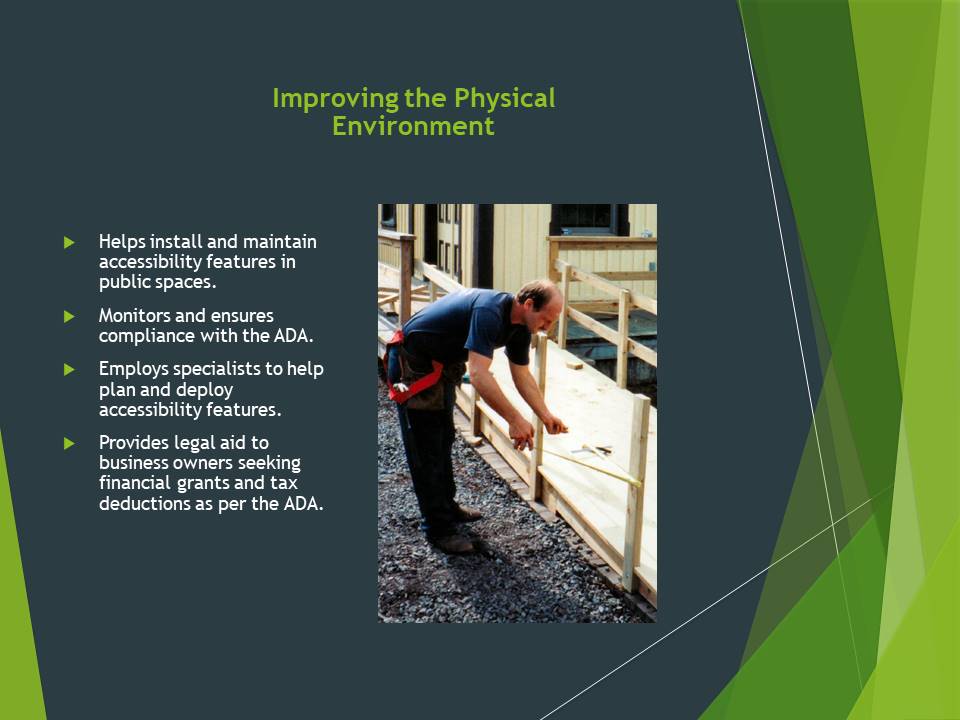

Conclusion
- Stronger Together.
- Offers legal support.
- Advocates for individuals’ human and civil rights.
- Offers group sessions and activities.
- Ensures positive and just environments (including working ones).
- Maintains housing and transportation.
- Offers educational sessions.
Stronger Together supports people having disabilities by offering legal support, advocating for their civil and human rights. It offers group sessions and physical activities, and ensuring just and positive environments for them. Moreover, it maintains appropriate housing and transportation for these individuals and provides companies with educational sessions.
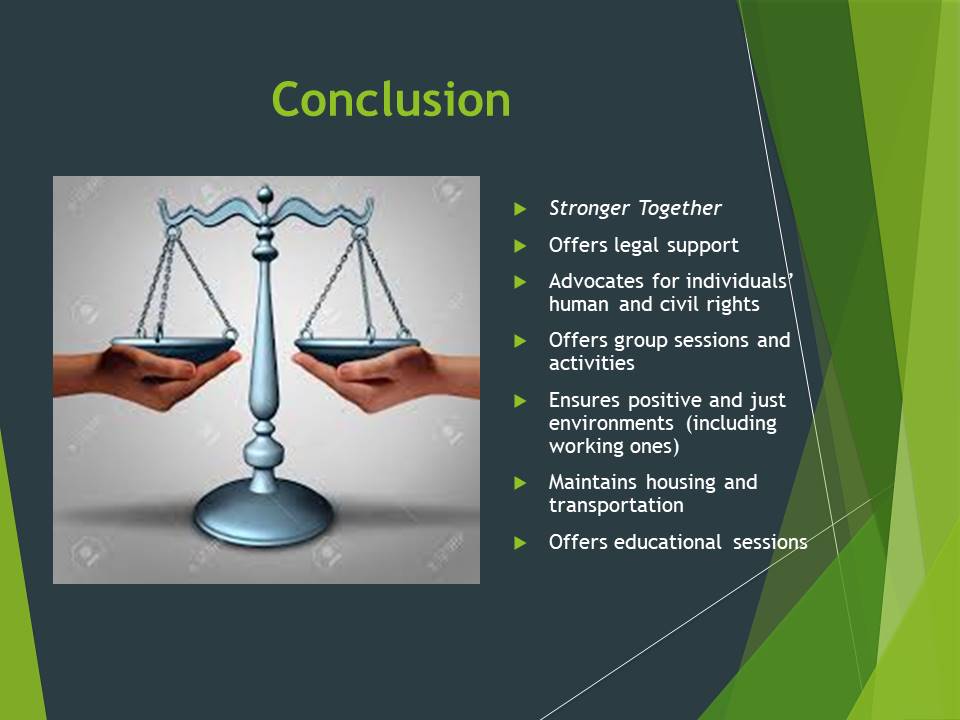
References
DeSantis, P. 1994. Making anthropology clinically relevant to nursing care. Journal of Advanced Nursing, 20, 707-715.
Employer Assistance and Resource Network on Disability Inclusion. 2019. “About.” AskEARN.org.
Krops, Leonie A., Nienke Folkertsma, Doortje H. J. Hols, Jan H. B. Geertzen, Peter U. Dijkstra, & Rienk Dekker. 2019. “Target Population’s Requirements on a Community-Based Intervention for Stimulating Physical Activity in Hard-to-Reach Physically Disabled People: An Interview Study.” Disability and Rehabilitation 41(19): 2272-2279.
Moore, Katherine, Paula McDonald, and Jennifer Bartlett. 2017. “The Social Legitimacy of Disability Inclusive Human Resource Practices: The Case of a Large Retail Organisation.” Human Resource Management Journal 27(4): 514-529.
Moscoso-Porras, M. G., & Alvarado, G. F. (2018). Association between perceived discrimination and healthcare-seeking behavior in people with a disability. Disability and Health Journal, 11(1), 93–98.
National Disability Rights Network. 2019. “About.” NDRN.org.
Singer, Merrill and Hans Baer. 2012. Introducing Medical Anthropology: A Discipline in Action. 2nd ed. Lanham: AltaMira Press.
WXXI Arts Infocus. 2017. “Expressive Arts Session at Hochstein School of Music and Dance.” Wxxinews.org.
United States Department of Justice. (2010). Americans with Disabilities Act Title III Regulations.